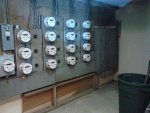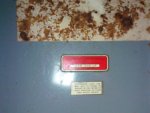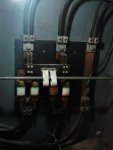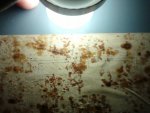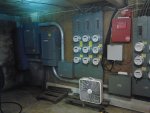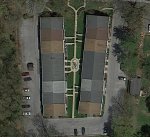FionaZuppa
Senior Member
- Location
- AZ
- Occupation
- Part Time Electrician (semi retired, old) - EE retired.
I am a pretty practical guy and it seems very unlikely that any manufacturer produced a 400 amp rated fused switch that could accept 800 amps of overcurrent protection. I won't say it is not possible, just unlikely.
It should go without saying that if this switch is actually labeled as 400 amp that it should not be used beyond that.
its only 800A because someone put in two 400A fuses. someone could have put in 800A fuses.
the other disco he mentions, says that is a 400A disco, but if its using std size fuse anyone can stick a 800A fuse in there.


